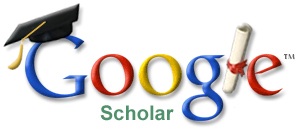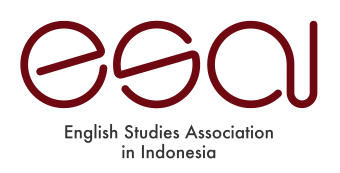AN ANALYSIS OF GENDER REPRESENTATION IN I LOVE JAKARTA, AN ELEMENTARY TEXTBOOK
Abstract
Keywords
Full Text:
PDFReferences
Aguilar, J.S. (2021). Gender representation in EFL textbooks in basic education in Mexico. MEXTESOL Journal, 45(1). https://eric.ed.gov/?id=EJ1288543
Amini, M., & Birjandi, P. (2012). Gender bias in the Iranian high school EFL textbooks. English Language Teaching, 5(2). doi:10.5539/elt.v5n2p134
Ary, D., Jacobs, L. C., Irvine, C. K. S., & Walker, D. (2018). Introduction to research in
education. Cengage Learning.
Bailey, S. (1992). How schools shortchange girls: The AAUW report. Marlowe & Company.
Barton, A., & Sakwa, L. N. (2012). The representation of gender in English textbooks in
Uganda. Pedagogy, Culture & Society, 20(2). https://biblio.ugent.be/publication/2753544/file/2963258.pdf
Beebe, J. D. (1996). Sexist language and teaching English as a foreign
language. IDENTIFIERS* Gender Issues;* Japan; Japan (Tokyo); Socratic Method, 107.
Blaine, B. E. (2007). Understanding the psychology of diversity. SAGE.
Bowen, G.A. (2009), Document Analysis as a Qualitative Research Method. Qualitative
Research Journal, 9,(2). https://doi.org/10.3316/QRJ0902027
Brugeilles, C., & Cromer, S. (2009). Promoting gender equality through textbooks: A methodological guide. UNESCO. http://unesdoc.unesco.org/images/0015/001588/158897e.pdf
Butler, J. (1999). Gender trouble feminism and the subversion of identity. Routledge.
Charteris-Black, J., & Seal, C. (2010). Gender and the language of illness. Palgrave Macmillan.
Cunningsworth,A.(2002).Choosing Your Coursebook.Foreign Language Teaching and Research Press.
Dornyei, Z. (2007). Research methods in applied linguistics. Oxford university press.
Eckert, M. G. (2003). Eckert P., McConnell-Ginet S. Language and Gender.
Cambridge University Press.
Emilia, E., Moecharam, N. Y., & Syifa, I. L. (2017). Gender in EFL classroom: Transitivity
analysis in English textbook for Indonesian students. Indonesian Journal of Applied Linguistics, 7(1). https://ejournal.upi.edu/index.php/IJAL/article/view/6877/4691
Ena, O. (2013). Visual analysis of e-textbooks for senior high school in Indonesia [Doctoral
thesis, ProQuest Dissertations Publishing]. http://search.proquest.com/docview/1415874836/
Fitriansyah, F. (2019). Analisis isi buku teks teknologi pembelajaran sebagai sumber
belajar mahasiswa. Cakrawala, 19(2). Retrieved from: https://www.researchgate.net/publication/337392743_Analisis_Isi_Buku_Teks_Teknologi_Media_Pembelajaran_Sebagai_Sumber_Belajar_Mahasiswa/fulltext/5dd53b87299bf11ec866a410/Analisis-Isi-Buku-Teks-Teknologi-Media-Pembelajaran-Sebagai-Sumber-Belajar-Mahasiswa.pdf
Gharbavi, A., & Mousavi, S. A. (2012). A content analysis of textbooks: Investigating gender
bias as a social prominence in Iranian high school English textbooks. English Linguistics Research, 1(1). https://www.researchgate.net/publication/267962503_A_Content_Analysis_of_Textbooks_Investigating_Gender_Bias_as_a_Social_Prominence_in_Iranian_High_School_English_Textbooks
Hall, M. (2014). Gender representation in current EFL textbooks in Iranian secondary schools.
Journal of Language Teaching & Research, 5(2). https://doi.org/10.4304/jltr. 5.2.253-261
Harmer, J. (2007). How to teach English, (Oxford: Pearson Education Limited), new edition, p.152
Hinkel, E.(2005). Handbook of research in second language teaching and learning volume II. Routledge.
Holmes, Janet. (2009). Men, masculinities and leadership: Different discourse styles at work. In: Pichler P., Eppler E. (eds) Gender and Spoken Interaction. Palgrave Macmillan. https://doi.org/10.1057/9780230280748_9
Instituto Nacional de las Mujeres, México (2007a). El impacto de los estereotipos y los roles de género en México [The impact of stereotypes and gender roles in Mexico]. http://cedoc.inmujeres.gob.mx/documentos_download/100893.pdf
Instituto Nacional de las Mujeres, México. (2007b). Glosario de Género [Glossary of gender]. México. http://cedoc.inmujeres.gob.mx/documentos_download/100904.pdf
Jackson, S.L. (2008). Research Method: A Modular Approach. Thomson Wadsworth.
Kereszty, O. (2009). Gender in textbooks. Practice and Theory in Systems of Education, 4(2). https://www.academia.edu/36638849/GENDER_IN_TEXTBOOKS
Klein, S. (1985). Handbook for achieving sex equity through education. The Johns Hopkins University Press.
Lee, J. F. (2014). A hidden curriculum in Japanese EFL textbooks: Gender
representation. Linguistics and Education, 27. https://daneshyari.com/article/preview/366201.pdf
Lee, J. F., & Collins, P. (2008). Gender voices in Hong Kong English textbooks: Some past and current practices. Sex Roles, 59(1).
Litosseliti, L. (2006). Gender and language: Theory and practice. Hodder Arnold.
Marshall, C.S. & Reihartz, J. (1997). Gender issues in the classroom. Clearinghouse, 70 (6).
Mukundan, J., & Nimehchisalem, V. (2008). Gender representation in Malaysian secondary school English language textbooks. Indonesian Journal of English language teaching, 4(2). https://media.neliti.com/media/publications/243969-none-d06c3776.pdf
Mulrine, A. (2001). Are Boys the Weaker Sex?. U.S. News & World Report, 131(4).
Muñoz López, A., Cortés Cid, M. M., & Rodríguez Gutiérrez, (2014). Guía la para la incorporación de perspectiva de género [Guide for the incorporation of gender perspective]. Secretaría de Relaciones Exteriores.
Nashriyah., & Khairul, D. (2018). English senior high school textbook analysis: addressing gender bias issues. International Journal of Child and Gender Studies, 4(2). Retrieved from: https://jurnal.ar-raniry.ac.id/index.php/equality/article/view/4531
Novianti, S. (2014). An analysis of compatibility on English textbook entitled Bright for the seventh grade students of junior high school based on Tomlinson’s theory [Undergraduate thesis, Muhammadiyah University of Surakarta]. http://eprints.ums.ac.id/29780/9/02._JURNAL_PUBLIKASI.pdf
Richards, J. C. (2001). Curriculum development in language teaching. Cambridge University Press. https://id1lib.org/book/903944/0ee06b
Richards, J. C. (2006). Curriculum development in Language Teaching. Cambridge University Press.
Rooms, S. & Muhwezi, M. (2019). Teaching gender equality to the youngest learners. https://www.globalpartnership.org/blog/teaching-gender-equality-youngest-learners
Salamah, U. (2014). Gender representation in the English textbook: A content analysis of
Bright for seventh grade students published by Erlangga [Undergraduate thesis, Syarif Hidayatullah State Islamic University]. http://repository.uinjkt.ac.id/dspace/bitstream/123456789/25777/3/UMMU%20 SALAMAH-FITK.pdf
Shallaita, B. A., Nawawi, N., & Amin, M. (2021). Analysis of English Language Teaching Materials on Gender Representation. International Journal of Multicultural and Multireligious Understanding, 8(2). https://ijmmu.com/index.php/ijmmu/article/view/2423
Sahin, M. A., & Acikalin, M. (2021). Gender Representation in Elementary and Middle School Social Studies Textbooks in Turkey. Journal of International Women's Studies, 22(1). https://vc.bridgew.edu/cgi/viewcontent.cgi?article=2382&context=jiws
Singh, Y. K. (2010). Fundamental of research methodology and statistics. New Age International Publisher. http://dspace.vnbrims.org:13000/jspui/bitstream/123456789/4651/1/Fundamental%20of%20Research%20Methodology%20and%20Statistics.pdf
Springer, K. (2010). Educational research: A contextual approach. John Willey & Sons, Inc.
Suhartono, & Kristina, D. (2018). Gender bias in textbooks and test items of English
language Learning in the Indonesian context. Advances in Social Science, Education and Humanities Research, 166. Retrieved from: https://www.researchgate.net/publication/327899046_Gender_Bias_in_Textbooks_and_Test_Items_of_English_Language_Learning_in_the_Indonesian_Context/citations
Syela, A. (2018). The Analysis of Gender Position in ELT (English Language Teaching)
Textbooks for Eleventh Grade Students. (Doctoral dissertation, Universitas Islam Negeri" Sultan Maulana Hasanuddin" Banten). http://repository.uinbanten.ac.id/2159/1/Skripsi%20-%20Ani%20Syela%20%28142301613%29.pdf
Trisha, A. H. (2016). A study on the role of textbooks in second language acquisition
[Undergraduate thesis, BRAC University]. Retrieved from: http://dspace.bracu.ac.bd:8080/xmlui/bitstream/handle/10361/7627/12103043_ENH.pdf?s=
Ullah, H., & Skelton, C. (2013). Gender representation in the public sector schools textbooks
of Pakistan. Educational Studies, 39(2). https://booksc.org/book/37219321/933b1a
Wallace, K. (2017). How to teach children about gender equality. https://edition.cnn.com/2017/09/26/health/gender-equality-teaching-children-parenting/index.html
Yang, C. C, R. (2014). Gender representation in Hong Kong primary English language textbooks: A study of two widely-used textbook series. [Unpublished doctoral dissertation]. Lancaster University. https://eprints.lancs.ac.uk/id/eprint/70055/1/2014ChiCheungRubyYANGphd.pdf
Zahri, A. (2018). Gender representation in Indonesia EFL textbook exercise (a critical analysis of Buku Bahasa Inggris Exercise published by Kemendikbud) [Undergraduate thesis, Ar-Raniry State Islamic University]. https://repository.ar-raniry.ac.id/id/eprint/3261/1/ASLIM%20ZAHRI.pdf
Zittleman, K., & Sadker, D. (2002). Teacher education and gender equity: The unfinished
revolution. http://www.sadker.org/PDF/TextbooksandGenderEquity.pdf
DOI: http://dx.doi.org/10.30813/jelc.v13i1.3652
Refbacks
- There are currently no refbacks.



2.jpg)



